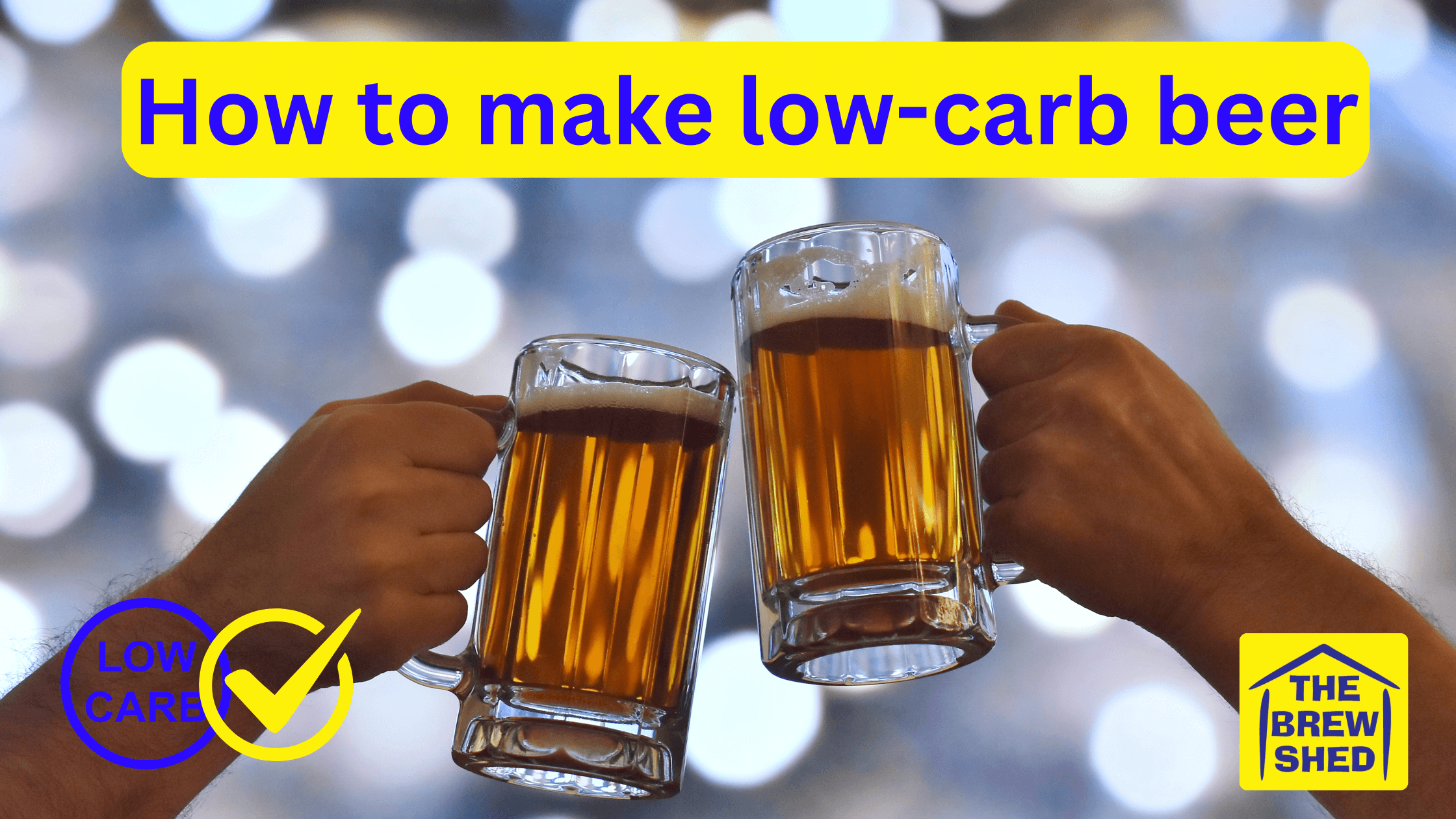TL;DR 😉
Want to enjoy craft beer without blowing your carb count? Low-carb home brewing is easier than you think. With the right kit, ingredients, and a pinch of patience, you can brew crisp, lower-carb beers at home that are fresh, affordable, and tailored to your taste.
What is Low-Carb Home Brewing?
Low-carb home brewing uses dry enzyme and low-carb malt extracts to reduce the amount of residual sugar (carbs) left in your finished beer. The result? A drier, lighter beer that still hits the spot.
It’s a growing trend in Australia, especially with beer lovers looking for healthier options without giving up their favourite drink.
Essential Equipment for Low-Carb Brewing
Here’s what you’ll need to start brewing low-carb beer at home:
- Fermenter – A food-grade container where fermentation happens.
- Hydrometer – Measures sugar levels so you know when your beer is ready and how low the carbs are.
- Thermometer – Keeps your brew in the right temperature range.
- Airlock (bubbler) – Lets gas escape but keeps nasties out.
- Bottling wand – Makes filling bottles easy and clean.
- Bottles & caps – Or a keg if you’re levelling up.
-
Cleaning supplies – Sanitiser and brushes.
💡 Tip: The Brew Shed’s Beer Starter Kits include everything on this list so you can get brewing straight away 👉 Beer Starter Kits CLICK HERE
Key Ingredients for Low-Carb Brewing
- Malt Extract Tin – Choose pilsner or “dry” labelled kits for lower carbs.
- Hops – For aroma and flavour (most kits already include them).
- Yeast – Usually under the lid of your kit.
- Water – Tap is fine, filtered is better.
- Dextrose (brewing sugar) – For fermentation and alcohol.
- Carbonation drops – Adds fizz when bottling.
- Dry enzyme – The game changer that breaks down extra carbs.
- Malts Extract Tin: Choose lower carb beer kits like pilsner, or a variety labelled “dry”.
- Hops: These add aroma, flavour and bitterness, but aren’t necessary as the malt most likely has hops added too.
- Yeast: Always attached under the lid of the extract tin and included in the price of the tin.
- Water: The base of your beer. Tap water is fine but you might want to consider filtering it.
- Simple Sugar: For fermentation and alcohol production dextrose is the most common.
- Carbonation Drops: This creates the fizz in your bottled beer!
-
Dry Enzyme: The magic ingredient for lower carb beer

Step-by-Step: How to Brew Low-Carb Beer
- Pour the contents of your malt extract tin into your fermenter and top up with water as per kit instructions.
- Add the yeast and dry enzyme.
- Seal the fermenter and half-fill the airlock with water.
- Let fermentation do its thing (usually 5–7 days).
- Check with your hydrometer. If it’s stable and finished fermenting, it’s bottling time.
- Sanitise bottles, add carbonation drops, and fill.
- Store for at least 3 weeks before cracking open.
🧾 Pro Tip: Low-carb beers taste drier than regular brews. That’s normal — and part of what makes them so easy to drink.
FAQs: Low-Carb Home Brewing
Is it hard to brew low-carb beer at home?
Nope - it’s almost identical to standard brewing. You just add dry enzyme at the start.
How many carbs are in home brewed low-carb beer?
It depends on your ingredients and fermentation, but dry enzyme significantly reduces residual sugars.
Does low-carb beer taste different?
Yes. It’s lighter, drier, and super drinkable - think crisp lagers or summer beers.
Can I brew cider or ginger beer low-carb?
Yes! Ask The Brew Shed team which kits work best for low-carb options.
Final Word
Brewing low-carb beer at home is simple, cost-effective, and perfect for anyone who loves beer but wants to keep their carb count in check. With the right starter kit, a few ingredients, and dry enzyme, you’ll be enjoying your first glass in just a few weeks.
👉 Ready to start? Check out our Beer Starter Kits HERE and give low-carb brewing a crack.


